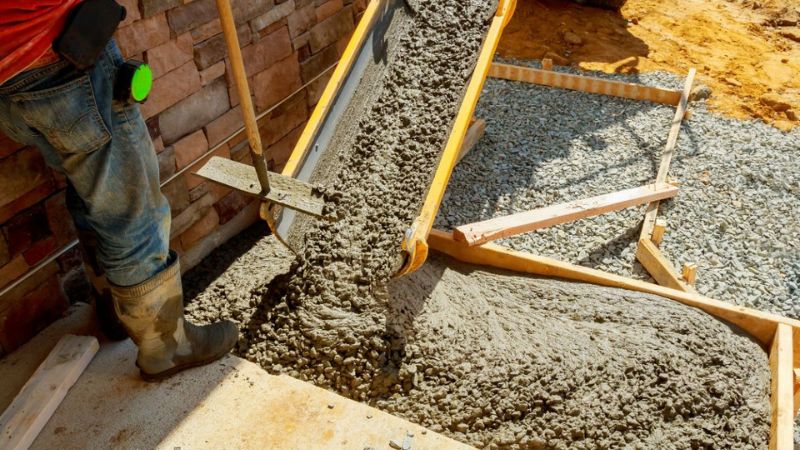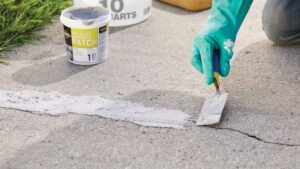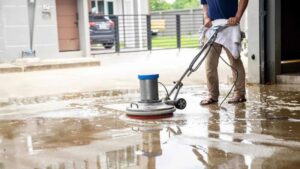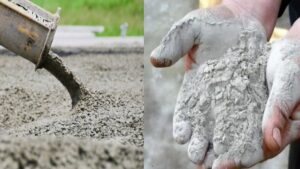Tips To Prevent Concrete Cracking – Concrete is a durable and versatile building material, but it’s not immune to cracks. Whether you’re pouring a new driveway, patio, or foundation, cracks can form due to a variety of factors such as temperature fluctuations, improper mixing, or poor installation techniques. Once cracks appear, they can lead to bigger structural problems, higher repair costs, and unsightly surfaces.
The good news is that with a little knowledge and preventive care, you can significantly reduce the risk of cracking in your concrete. By following a few simple tips during the installation process and maintaining your concrete properly afterward, you can ensure that your concrete remains strong, stable, and crack-free for years to come. In this article, we’ll walk you through 8 Tips To Prevent Concrete Cracking, helping you save time and money while ensuring the longevity of your concrete surfaces.
8 Tips To Prevent Concrete Cracking
1: Choose the Right Concrete Mix
Selecting the right concrete mix is one of the most critical steps to prevent cracking. A well-balanced mix will have the correct proportions of water, cement, and aggregates like sand or gravel. The strength of your concrete largely depends on these ratios, so ensuring a proper blend is key. Too much water can weaken the concrete, making it more prone to cracks. When mixing, aim for a consistency that’s firm but workable.
Furthermore, different kinds of concrete mixes could be needed for different tasks. For example, a driveway or patio may require a stronger mix compared to a simple walkway. Consult with a professional or your local supplier to determine the best concrete mix for your specific project. Using a pre-mixed concrete from a reliable manufacturer can also ensure the right balance of components and prevent future cracking.
Also Read:- Difference Between Cement and Concrete
2: Reinforce the Concrete Properly
Reinforcement adds strength and durability to concrete, helping it resist cracking under pressure or shifting. Steel rebar and wire mesh are common materials used to reinforce concrete. By placing these reinforcements within the concrete before it sets, you create a framework that holds the structure together even as it expands and contracts.
Reinforcements distribute the weight and stress evenly across the slab, reducing the likelihood of cracks forming in one concentrated area. In high-traffic areas like driveways, reinforcement is especially crucial. For smaller projects, fiber-reinforced concrete may also be a good alternative, as the fibers add tensile strength to the mix. Proper placement and alignment of reinforcements ensure your concrete remains crack-free and robust.
3: Control Water During the Pouring Process
Water control during the pouring and curing process is vital in preventing cracks in concrete. If the mix is too wet, the concrete weakens, leading to potential cracking. However, if there’s not enough water, the mix can dry too quickly and develop surface cracks. Aim for a balanced, moist mixture when pouring, ensuring the concrete has time to set properly.
After the concrete has been poured, maintaining an optimal moisture level is essential for curing. This can be achieved by using a plastic sheet, applying a curing compound, or regularly misting the surface. A slow and steady curing process allows the concrete to reach its full strength without drying out too fast, which significantly reduces the chances of cracking.
4: Use Control Joints
Control joints are pre-planned cracks designed to direct where the concrete will naturally crack as it expands and contracts with temperature changes. These joints help manage and prevent uncontrolled cracking by providing a weak spot where the concrete can safely split without compromising the entire structure. To create effective control joints, you need to place them at the proper intervals, typically every 8-12 feet for a slab.
The depth of the joints should be about one-quarter of the slab’s thickness. Using a saw or tool to cut the joints shortly after the concrete is poured is crucial for their effectiveness. Control joints are especially useful for large concrete surfaces like patios, driveways, and sidewalks.
5: Avoid Overloading the Concrete
Overloading concrete surfaces, particularly in high-traffic areas like driveways or parking lots, can lead to cracking. Although concrete is a strong material, it has its limits, especially if it’s not properly reinforced. Regular exposure to heavy vehicles, equipment, or other substantial loads can stress the concrete and cause it to crack over time. To prevent overloading, make sure the concrete slab is thick enough to handle the expected load.
For residential driveways, a slab thickness of at least 4 inches is recommended. For heavier commercial use, a thickness of 6 inches or more may be necessary. Reinforcing the concrete with steel bars or mesh can also help distribute weight evenly and prevent cracking under pressure.
6: Avoid Extreme Temperature Changes During Curing
Temperature plays a significant role in how concrete cures, and extreme fluctuations can lead to cracks. If the weather is too hot, the concrete may dry out too quickly, causing it to shrink and crack. On the other hand, freezing temperatures can cause water inside the concrete to expand, creating stress that leads to cracks. To prevent this, aim to pour concrete in moderate weather conditions.
If this isn’t possible, take extra precautions such as using insulation blankets, heaters, or shade to maintain a stable curing temperature. Keeping the concrete at a consistent temperature throughout the curing process ensures it gains strength gradually without developing cracks from thermal stress.
7: Ensure Proper Ground Preparation
A well-prepared base is essential for preventing cracks in concrete. If the ground beneath the concrete isn’t properly compacted or leveled, the slab may settle unevenly, causing cracks to appear. Before pouring concrete, the subgrade should be thoroughly compacted and free of any organic materials like roots or debris, which could cause the ground to shift over time.
Adding a layer of gravel or crushed stone can also help with drainage and provide additional support. The goal is to create a stable, even surface that will allow the concrete to settle uniformly, reducing the risk of cracking caused by uneven pressure or movement below the slab.
Also Read:- Tips For Effective Concrete Maintenance
8: Properly Maintain and Seal the Concrete
Maintenance is key to ensuring your concrete remains crack-free over time. Sealing your concrete is an effective way to protect it from external elements like moisture, chemicals, and temperature changes, all of which can contribute to cracking. A good sealant creates a barrier that prevents water from penetrating the surface, which is especially important in regions with freeze-thaw cycles.
Regularly inspect your concrete for small cracks or damage and address them promptly before they expand into larger issues. Resealing the surface every few years will help maintain its strength and durability, preventing cracks and prolonging the life of your concrete structure.
Conclusion
Preventing concrete cracking doesn’t have to be complicated. By applying the right techniques, from choosing the right mix to maintaining proper moisture levels, you can safeguard your concrete from common cracking issues.
These eight tips will help you avoid costly repairs and ensure your surfaces remain durable and aesthetically pleasing. Remember, investing time in prevention during installation and maintenance is key to long-lasting, crack-free concrete. Follow these steps, and you’ll enjoy a stronger, more resilient structure for years to come.
FAQs
What causes concrete to crack?
Concrete cracks can result from poor installation, temperature changes, or excessive moisture loss during curing.
How can I prevent my concrete from cracking?
Prevent cracks by ensuring proper curing, using the right concrete mix, and controlling water content during installation.




